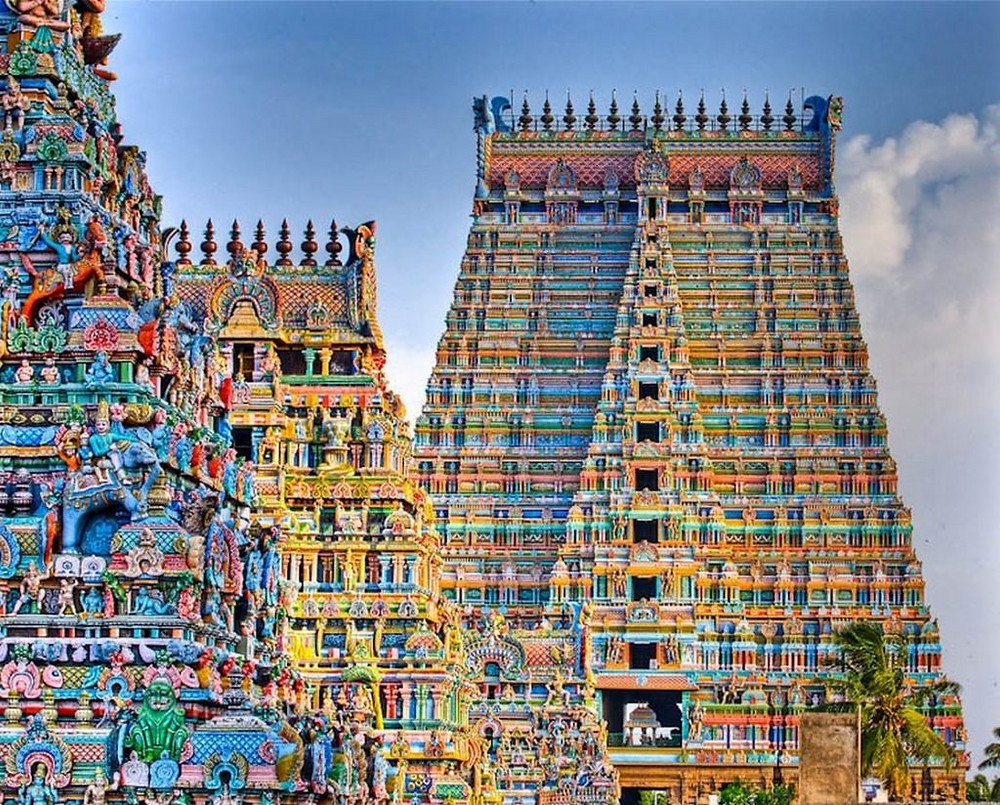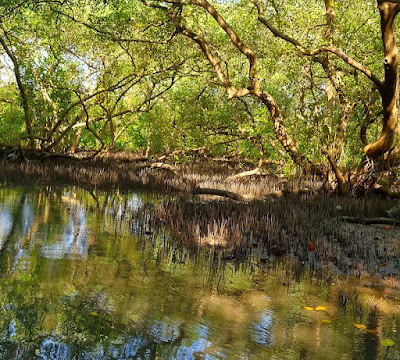As a Hindu I follow a faith that offers a veritable smorgasbord of options
to the worshipper of divinities to adore and to pray to, of rituals to observe
(or not), of customs and practices to honour (or not), of fasts to keep (or
not). As a Hindu I subscribe to a creed that is free of the restrictive dogmas
of holy writ, one that refuses to be shackled to the limitations of a single
volume of holy revelation.
-Shashi Tharoor
It is said that whatever you can rightly say
about India, the opposite is also true. The same can also
be said about Hinduism. Shashi Tharoor in the initial chapters of his book ‘Why
I am a Hindu’ lists out how Hinduism is different from other religions and what aspects of it appeal to him personally. Many of these like
absence of dogma, no declaration of being the ONLY-truth, a fair amount of
flexibility in practices and the deep philosophical traditions – are my reasons
too for appreciating the religion I was born into. I consider myself a
believer. Though I do not follow any specific ritual or sect, I acknowledge the
presence of a superior power and I do bow to Her pretty often. I express
gratitude when good things happen to me, I pray when things go tough. That
said, my religion is a very personal and private matter. As taught by my
parents, both of whom were against any pomp or show of religion, I don’t
believe in showing my faith in the way I dress, decorate my house etc. Much
like most other Hindus of liberal upbringing , I have no problem in accepting
other beliefs, visiting churches, dargah, mosques or other religious shrines.
Neither I face any problem in visiting various kinds of temples that exist in
India. I was born in a family that professed Arya Samaj hence there was no
specific significance for any idols for me. Yet I face no dilemma in appreciating
a work of art in a Ganesha statue and I have a whirling dervish next to a
Buddha figurine in my drawing room. I do not relate that to religion as such.
But occasionally I wonder if the kind of liberal
intellectual “fit” of religion which I inherited in my family, is now a thing
of past. We are passing through a time when in India a temple has become a
socio-cultural, political and even legal issue. It is a time when the lines
between my truth and your truth have been blurred and there is a frenzied
search or rather declaration of ‘the’ truth. I find myself unable to agree with
the violence, self-glorification of football-hooliganism and a very male
-chauvinistic interpretation of rules of Hinduism.
Kerala temples have been in news for many wrong reasons.
When I started this series of posts, I mentioned that I am in the city of
Padmanabh Swamy. The city not only derives its name from the reigning deity of
the temple- but it is also in many ways, still a temple town. A town which
despite being a seat of political power, very stubbornly shies away from the
look of a big city. It is as if, the city is very content, even takes pride in
its image of a temple town. I am very curious about the temple in more than one
ways, but I am still postponing my visit.
The thing is the temples in south India do not allow
you to have a worship of the deity on your own terms. Entire event is closely
regulated and controlled by temple administrators (all men).
As per my Hinduism, there should not be any
restriction for non-Hindus in entering Hindu shrines. History provides ample
evidence when Hindu temples welcomed believers of other faiths and even
felicitated them. But today, in some of
these temples there are ban on entry of non-Hindus. The ban is quite ironical
as many temple group take great pride that they also have an affiliated temple
in US or Australia. The hypocrisy of such restrictions has come to light in
many cases. There is a famous case of legendary singer K.J.Yesudas, a Catholic
by birth. His devotional songs are played in many of these temples where he was
refused entry many times. Finally in 2017, at the insistence of a Ex-Royal
trustee, the temple board of Padmanabh Swamy temple did an exception for him.
Furthermore,
there are dress-codes and even within dress-codes there are restrictions for women.
At times some parts or even some temples are kept out of bound from women.
These aspects make me uncomfortable. Though I am a saree clad person on all
workdays, I find it difficult to accept a dress-code for visiting the deity.
While men cannot wear shirts and have to be in traditional mundu / dhoti ,
women cannot visit unless they are in saree or covered till toe. In 2016, after
a court case, temple authorities allowed salwar suit or churidar for women –
though I am told that in practice, it is still not adhered to.
Let us not forget, this is the land that gave eighth century Vedic philosopher and the high-priest of Hindu Sanatan dharma Adi Shaankaracharya. Shankaracharya’s philosophy, his travels across the country and his deep philosophical treatise is a treasure trove of knowledge of this most fascinating ancient faith. But for me one event of Shankara’s life stands out as a defining moment of Hinduism. It is his meeting with the Chandala or an ‘outcaste’- the man who works at crematorium, lowliest of lowly caste of people. The event it is believed happened in the narrow alleyways of the embankment of Ganga in Varanasi. Shankara was going for holy dip in the river when he came upon the chandala. True to the prevalent belief of those days that Brahmins would to be 'defiled' by the very shadow of those of this caste, the disciples of Shankara asked the 'outcaste' to move out of the way. However, the chandala retorted by asking the question:
अन्नमायादन्नमयमथवा चैतन्यमेव चैतन्यात्
यतिवर दूरीकर्तुं
वाञ्छसि किं ब्रूहि गच्छगच्छेति
To move matter from matter, or to separate
spirit from Spirit? O best among the twice-born, which of these two do you wish
to achieve by saying, “Move away, move away”?
(That is how will you become impure
by touching me? How do you differentiate between a Brahmin & a Chandala, because both our bodies are made of the same
elements: earth, water, fire, air and space, even though we look different. Our
aatman (Brahman) is the same and is absolute. This one aatman is expressed in
all living beings. So tell me, when we are made of same elements and same
aatman, how can you ask me to move away and not touch you?)
That is when Shri Adi
Shankaracharya realised the Chandala was teaching him his own philosophy of
Advaita Vedanta, and prostrated before Chandala and composed Manisha
Panchaka.
I consider this anecdote, a defining moment for Hinduism as it
demonstrates how the religious truth often clashes with the societal norms and
how a true sage of faith needs the rationality to go beyond the ever-changing
rules of society to accept the manifestation of divinity in all forms and ways
and in all creatures of God – even if they do not profess your own faith.
When I read in history books about Vaikom Satyagraha in 1920s when people had to agitate to get their right to access to public spaces in this land of Shankara, I found it strange. Stranger perhaps is the insistence a century later in 2020s to keep the temples closed and rigid , in the name of tradition to fit the understanding of few men. But then, strange things happen in the name of religion all the time. People fighting, killing and spreading hate in the name of religion often forget what Hindi writer Sardar Pooran Singh wrote in his famous essay ‘Aachraan ki Sabhyata’ ( The Civility of conduct ) “सच्चा साधु धर्म को गौरव देता है, धर्म किसी को गौरवान्वित नहीं करता।"A true saint gives glory to religion, religion does not glorify anyone .
I feel distraught at the pomp, show and politicization of my faith because in this process we are not only discarding the deep spiritual legacy of Hinduism but we are, in many ways acting just like the people of other religions professing their truth as the only truth. With eclecticism as its core competency , my faith does not believe in rejection of other forms of worship and other ways of seeking the truth. Stopping other forms of worship, objecting to a dress or a food – for me is not the way of my religion.














